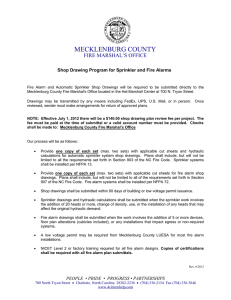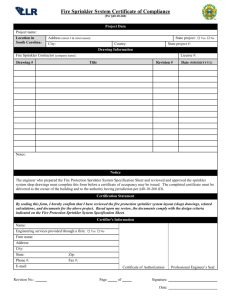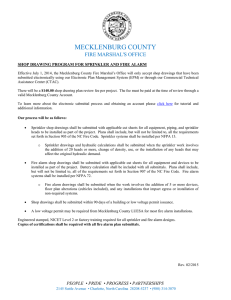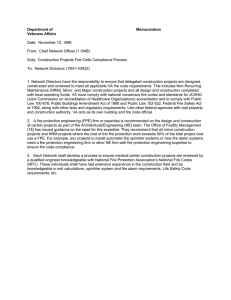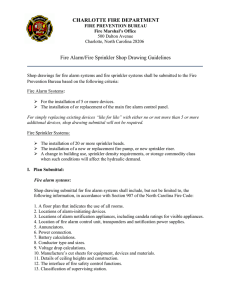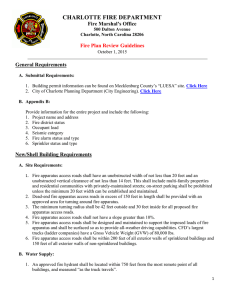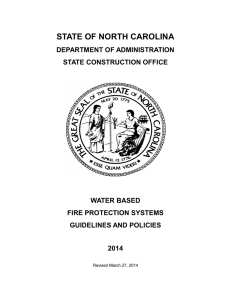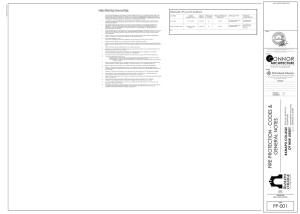QUALIFICATIONS AND SCOPE OF SERVICES PROJECT FIRE PROTECTION ENGINEER
advertisement
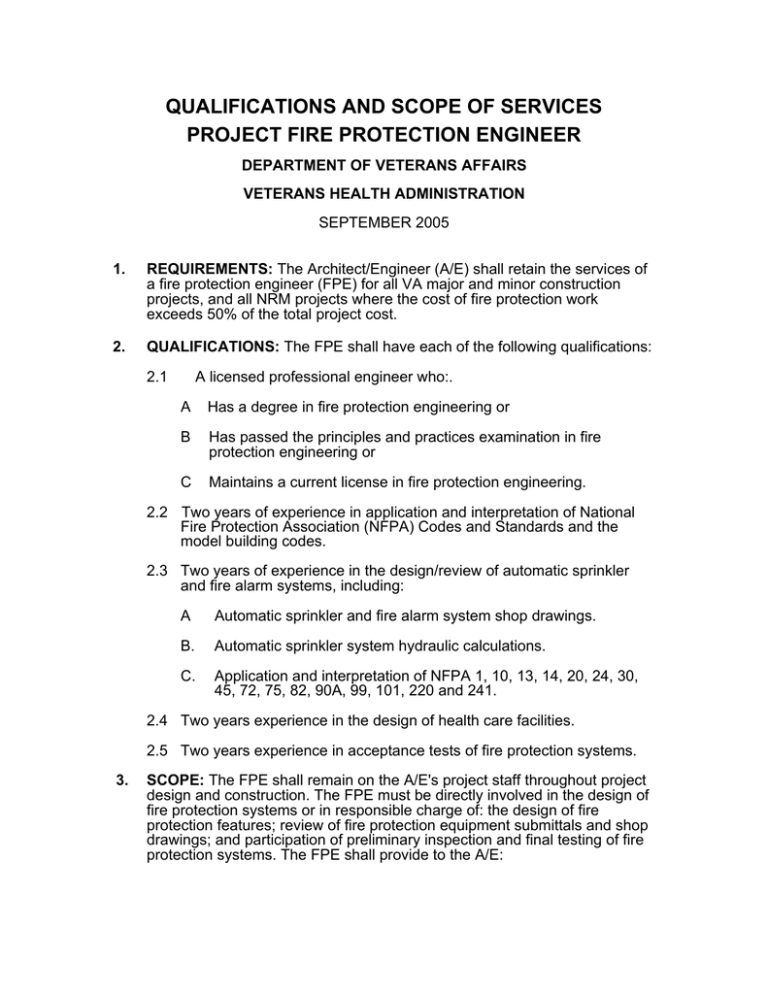
QUALIFICATIONS AND SCOPE OF SERVICES PROJECT FIRE PROTECTION ENGINEER DEPARTMENT OF VETERANS AFFAIRS VETERANS HEALTH ADMINISTRATION SEPTEMBER 2005 1. REQUIREMENTS: The Architect/Engineer (A/E) shall retain the services of a fire protection engineer (FPE) for all VA major and minor construction projects, and all NRM projects where the cost of fire protection work exceeds 50% of the total project cost. 2. QUALIFICATIONS: The FPE shall have each of the following qualifications: 2.1 A licensed professional engineer who:. A Has a degree in fire protection engineering or B Has passed the principles and practices examination in fire protection engineering or C Maintains a current license in fire protection engineering. 2.2 Two years of experience in application and interpretation of National Fire Protection Association (NFPA) Codes and Standards and the model building codes. 2.3 Two years of experience in the design/review of automatic sprinkler and fire alarm systems, including: A Automatic sprinkler and fire alarm system shop drawings. B. Automatic sprinkler system hydraulic calculations. C. Application and interpretation of NFPA 1, 10, 13, 14, 20, 24, 30, 45, 72, 75, 82, 90A, 99, 101, 220 and 241. 2.4 Two years experience in the design of health care facilities. 2.5 Two years experience in acceptance tests of fire protection systems. 3. SCOPE: The FPE shall remain on the A/E's project staff throughout project design and construction. The FPE must be directly involved in the design of fire protection systems or in responsible charge of: the design of fire protection features; review of fire protection equipment submittals and shop drawings; and participation of preliminary inspection and final testing of fire protection systems. The FPE shall provide to the A/E: 3.1. Consultation and review of fire protection and life safety requirements as addressed in the VA Fire Protection Design Manual. 3.2 Preparation of fire protection and life safety design (narrative) analysis report as required by VA Handbook PG-18-15 which addresses project compliance with all applicable requirements. 3.3. Preparation of fire protection drawings when required by VA Handbook PG-18-15. 3.4 Design of fire alarm and sprinkler systems. 3.5 Review of architectural, electrical, HVAC, plumbing drawings and related documentation during schematics, design development, and construction documents to ensure all fire protection requirements are coordination between disciplines. 3.6. Attending meetings with the A/E, VA facility and VA Headquarters to discuss the project during schematic, design development and construction document preparation phases. 3.7. Performance of field tests and site visits during the design process to verify the current capacity (flow and pressure) of water supply system based on flow testing of hydrants proximate to the building(s) where automatic sprinkler protection is to be installed, which include allowances for seasonal or daily fluctuations, industrial use demands, and future changes. Documentation shall include a flow curve on hydraulic graph paper. Note: Consult with public water supply authorities. Flow tests are not necessary if credible tests have been performed and documented within the past 12 months, and it is verified that neither VA facility or municipal demands will change in the near future. 3.8. Review of fire protection system shop drawings, technical data submitted by contractors and automatic sprinkler system hydraulic calculations for compliance with contract documents. 3.9. Interim inspections of job site to verify adequacy of fire protection system installation . 4.0. Witnessing final acceptance tests for newly installed fire protection systems. 4.1 Review the Fire protection system As-Built drawings prepared by the contractor. Review and approve fire protection maintenance manuals. ---END---
